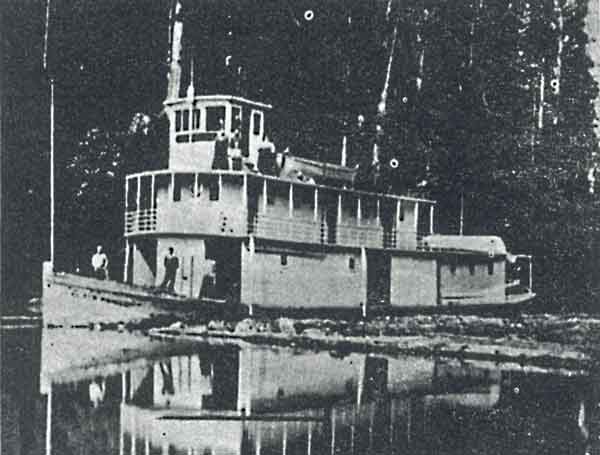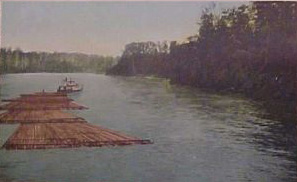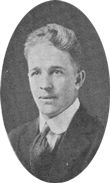The Rest of the Story on the Black Prince
by Helen Barrett

Excerpts reprinted from STERNWHEELERS AND THE SKAGIT RIVER by Helen Barrett © 1971 from the Skagit County Historical Society, Series, No. 1. The text under the photo reads; "From the collection of Ray Jordan, The Black Prince in Dead Man's Slough near Sedro-Woolley getting ready to start down river with a tow of logs...for the Bradsbury Logging Company"
"On top deck is Mr. & Mrs. Charles W. Wright and son Vernon, and Mrs. Bird, cook. Main deck: from left is F.M. Elwell, Frank Anderson, deck hands, and Wesley Harbert, fireman."
Helen Barrett; edited by Margaret Willis, wrote what would be the first in a series of seven volumes dealing with Skagit County history for the Skagit County Historical Society.
This book itself has been out of print for some time but I was fortunate enough to borrow a copy from a friend after doing the below story.
Twenty-two pages from front cover to back, it gives a real nice synopsis and timeline on the infancy of the county. Then on to why the sternwheelers became so important to the growth of early Skagit County- even before the more regarded railroads.
I was pretty pleased to find the rest of the story on the "Black Prince" to follow up the experiences of our young hero below, John Savage; who spent some time working on the "Black Prince" herself.
Ye Editor with a nod to Paul Harvey
|
 "After completion, the Prince came back to Everett under her own power and then went to the Skagit to tow logs and pilling," Elwell wrote.
"After completion, the Prince came back to Everett under her own power and then went to the Skagit to tow logs and pilling," Elwell wrote. My name is Betty Savage, married to Theodore Savage for over fiftty years.
Ted's father was
John Wesley Savage who was born, near the upper Skagit River in 1889
at a little hamlet called Birdsview, in the state of Washington.
My name is Betty Savage, married to Theodore Savage for over fiftty years.
Ted's father was
John Wesley Savage who was born, near the upper Skagit River in 1889
at a little hamlet called Birdsview, in the state of Washington.